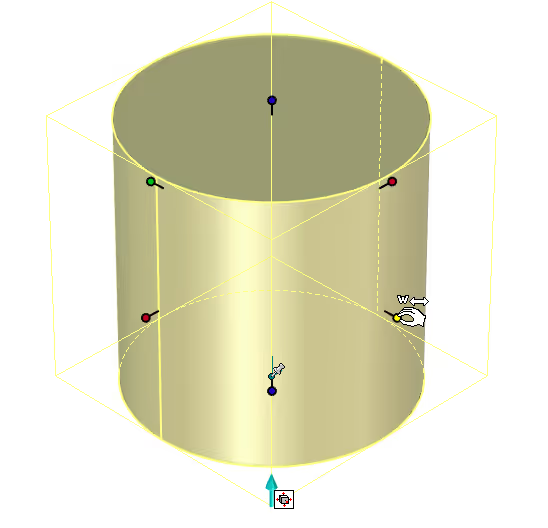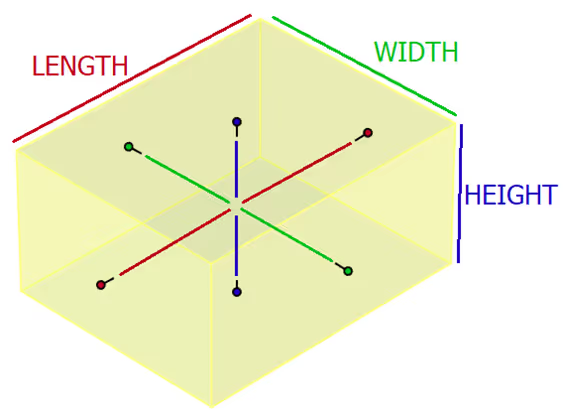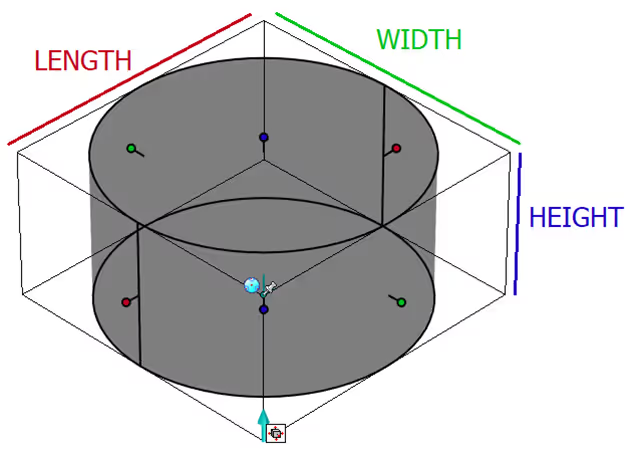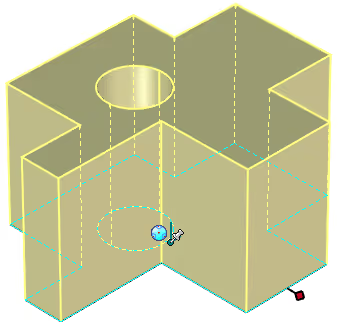Download Centre

Looks like you don't have ESC button on your device
Download IronCAD DCS
Choose one of the following options
trial versionHas a license

Emil Rindell

Jonas Bryntesson

Henrik Andersson
2025-09-10

Emil Rindell

Jonas Bryntesson

Henrik Andersson
2025-09-10
Question: As a beginner, I find the designations L, W and H a bit confusing to use on a round Cylinder mold. Would it be easier to just use the handles D (for Diameter) instead of W and L?
The handle H could even be called L as in Length with?

Answer: Yes, especially when you think of a round cylinder shape, it's obviously not a perfect fit.
But keep in mind that length, Width and Height represent the shape of a "Sizebox" (just as X, Y and Z represent directions) and that the round handles on each side are used to "resize this virtual square volume box".

What is then in a Sizebox can be a geometry that "100% fills the box" - a "Block". But it can also be a shape that only "partially fills the box", like a "Spherical shape" or a "Cylindrical shape" etc.
So it is this "virtual box" that you change the shape of, and the geometry in it must follow somehow. For a round cylinder mold, it will then automatically always be the W and L handles that represent its "diameter". The H handle in turn always corresponds to "extrusion height" (yes, it is perhaps simpler to say length, but L is "already occupied" by Length-handle for the length of the sizebox).

Of course, what fills the volume doesn't even have to be symmetrical, but then you should preferably no longer use the Sizebox handles to change the shape, because they "stretch" the geometry of the volume (actually the lines in the sketch) by a percentage in the direction you drag.
If you pull the W handle, the lines of the sketch in that direction will be longer, but the lines going in the L direction will also "follow" and move accordingly and vice versa. See the picture below.

Then there's another type of super smooth handle that's more suitable - the Shape handles!
They are also called "profile handles" because they appear one at a time on the contour line (in the "profile") that you touch with the mouse pointer. These are used to draw directly on the sketch lines, one at a time. But more about that in another post.

Answer: Here we publish tips, guides, news and solutions for those who work with IRONCAD and Design Data Manager (DDM). The blog covers everything from basic functions to advanced workflows, helping you to optimize your design work. You'll find examples of smart shortcuts, practical instructions, solutions to common problems, and best practices for product design, mechanical design, and product data management.
Answer: Our guides and tips are designed for both beginners and experienced CAD users. They are aimed at designers, engineers and project managers who want to work more efficiently with IRONCAD and DDM, improve the design process, reduce mistakes and save time in product development.
Answer: We regularly publish new articles when the software is updated, when new features are introduced, or when our users ask for solutions to specific problems. The blog is therefore a reliable source for keeping up to date and getting tips that make everyday CAD work easier.
Answer: Many of our instructions and tips work in multiple versions, but we clearly indicate if an article applies to a specific version. We strive to make the content useful for older versions as well, and also provide recommendations on how to adapt workflows to the version you are using.
Answer: Absolutely! If you can't find the solution in the blog, you can contact our technical support via solidmakarna.support. Our experts will help you with everything from installation and configuration to advanced features in IRONCAD and DDM, so you can solve problems quickly and efficiently.
Answer: Yes! We appreciate suggestions from our users. If you have questions, tips or want us to address a specific issue in IRONCAD or DDM , please contact us via our contact form and we will prioritize relevant topics in future posts.
Answer: The blog contains, among other things:
Practical step-by-step guides to help you use IRONCAD and DDM more effectively.
Productivity and workflow tips for faster design and construction.
Solutions to common problems encountered by users in CAD programs.
Updates and news on new features, versions and improvements.
Best practices for data management and project organization in DDM.
Answer: All tips and guides are directly applicable in daily work. For example, you can use shortcuts and smart features in IRONCAD to speed up modeling, structure files better in Design Data Manager, or follow our step-by-step solutions for specific problems that often come up in design projects.
Answer: We strive to ensure that all guides and tips are relevant to the latest versions of IRONCAD and DDM. We also clearly mark when a post applies to an older version, so you always know if the instruction is directly applicable to your system.
Answer: Yes! Many of our users share the articles with colleagues and use them as internal training materials. The blog is a great complement to formal training and helps teams learn features faster, avoid mistakes, and standardize workflows in IRONCAD and DDM.